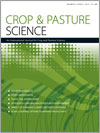CP13431Durum wheat quality in high-input irrigation systems in south-eastern Australia
The results show that durum wheat can be grown successfully under irrigation and this should encourage the growth of the durum industry. It is thought that irrigation can lead to a reduction in the pasta making quality of durum wheat. With control over irrigation timing and nitrogen addition, we obtained good quality durum wheat of similar quality to rainfed durum wheat. Varieties were identified with suitability for irrigation. Irrigation could be used by breeders to select for some quality characteristics more efficiently the rainfed durum trials.




